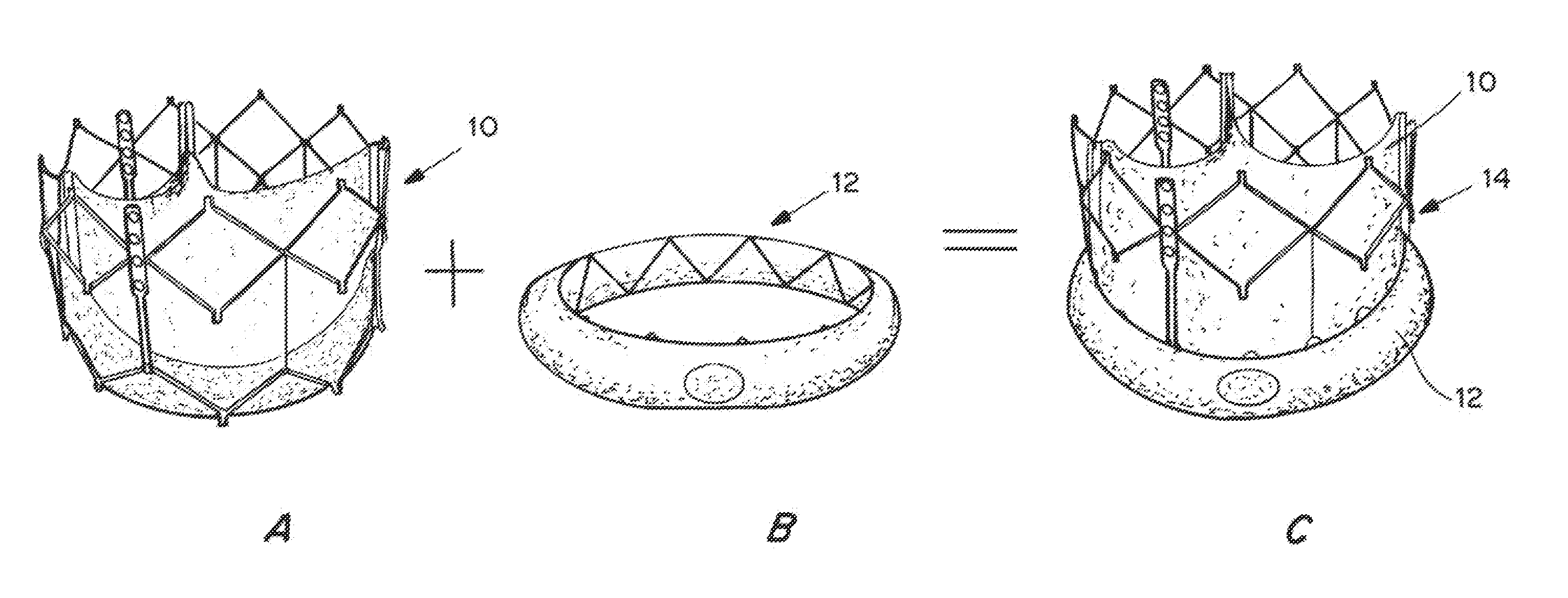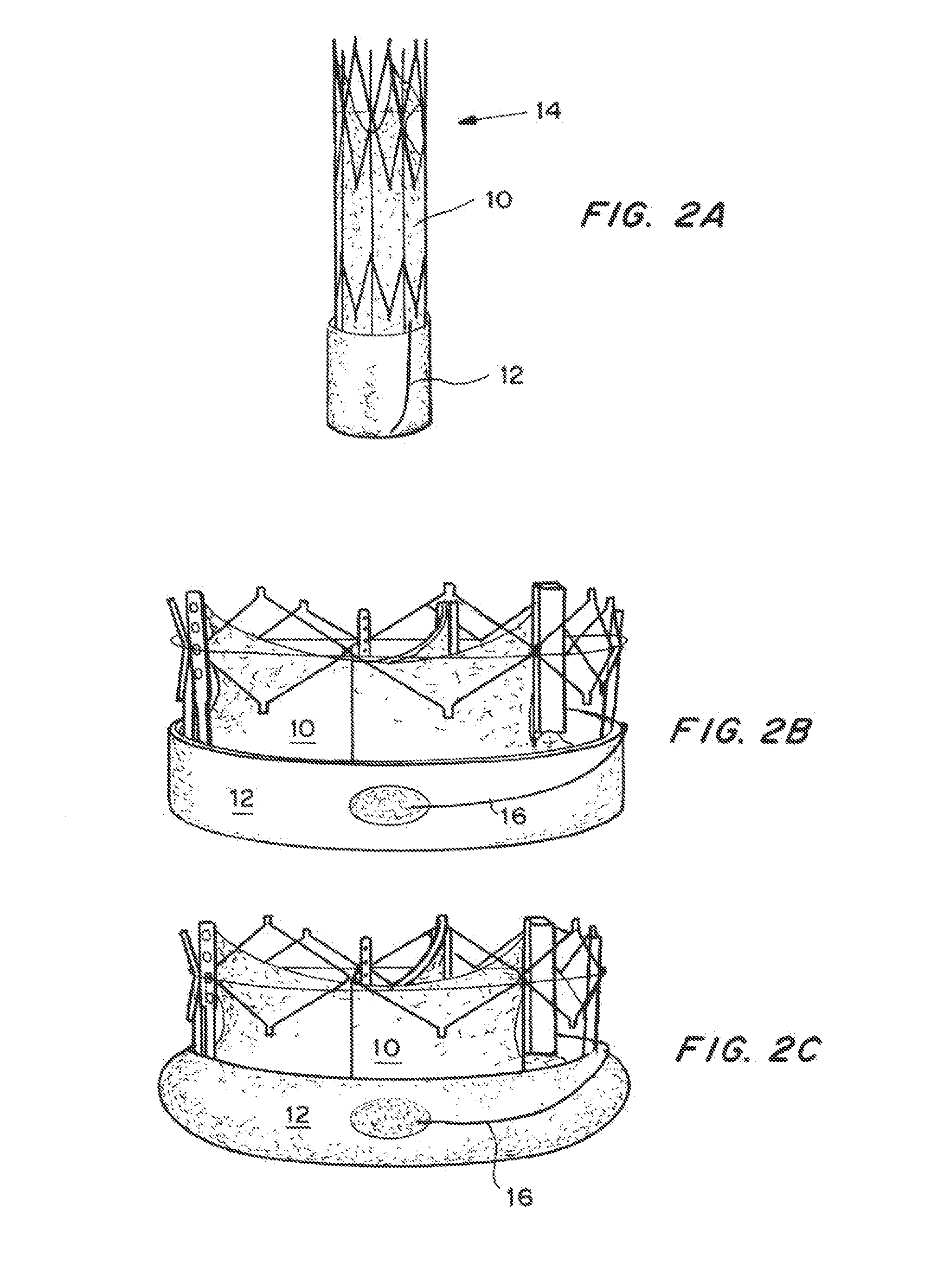Means for Controlled Sealing of Endovascular Devices
a technology of endovascular devices and sealing mechanisms, applied in the field of endoluminal devices, can solve the problems of life-threatening, severe hemorrhage or other complications, sudden death, and inability of the vessel to conduct fluids, and achieve the effects of preventing leakage, excellent sealing, and eliminating prosthetic-annular incongruen
- Summary
- Abstract
- Description
- Claims
- Application Information
AI Technical Summary
Benefits of technology
Problems solved by technology
Method used
Image
Examples
example 1
Preparation of Hydrogel with Rapid Swelling
[0222]Studies to identify hydrogels having substantial swelling in a short time were performed. The main factors that influence swelling of a hydrogel based on polymerisation and cross-linking of synthetic monomers are:
[0223]Type of monomer
[0224]Type of cross-linker
[0225]Concentration of monomer and cross-linker in the gel
[0226]The ratio of monomer to cross-linker
[0227]Acrylic acid polymers are capable of rapid swelling and are regarded as having good biocompatibility. A number of commercially available cross-linkers can be used to crosslink the polymers to form a hydrogel. These include Bis acrylamide, di(ethylene glycol) diacrylate, and poly(ethylene glycol) diacrylate (MW 500 Da).
[0228]Materials and Methods
[0229]Studies were conducted to identify appropriate combinations of acrylic acid concentration, type of cross-linker, concentration of cross-linker and ratio of monomer to cross-linker. The basic composition of the formulations used t...
example 2
Assessment of Alternative Crosslinkers for Hydrogels
[0239]The principle behind the selected crosslinkers is that rather than having a short cross-linker with only two polymerizable groups, a polyvalent crosslinker (i.e., a long-chain hydrophilic polymer with multiple polymerizable groups) is being used. A much stronger hydrogel is obtained compared to short chain, divalent crosslinkers. While these gels are very firm, they possess very good swelling characteristics. Very strong gels do not normally swell very much.
[0240]Poly vinyl alcohol (PVA) was derivatized with allyl glycidyl ether under alkaline conditions. Gels were made by combing acrylic acid with the PVA-based crosslinker and then polymerizing the mixture by free radical polymerization using ammonium persulfate and TEMED as initiators.
[0241]In principle, the crosslinker can be made with a number of different starting materials: A range of PVAs as well as partially hydrolyzed poly vinyl acetates, 2-hydroxyethyl methacrylates...
PUM
| Property | Measurement | Unit |
|---|---|---|
| Temperature | aaaaa | aaaaa |
| Pressure | aaaaa | aaaaa |
| Mass | aaaaa | aaaaa |
Abstract
Description
Claims
Application Information
 Login to View More
Login to View More - R&D
- Intellectual Property
- Life Sciences
- Materials
- Tech Scout
- Unparalleled Data Quality
- Higher Quality Content
- 60% Fewer Hallucinations
Browse by: Latest US Patents, China's latest patents, Technical Efficacy Thesaurus, Application Domain, Technology Topic, Popular Technical Reports.
© 2025 PatSnap. All rights reserved.Legal|Privacy policy|Modern Slavery Act Transparency Statement|Sitemap|About US| Contact US: help@patsnap.com



